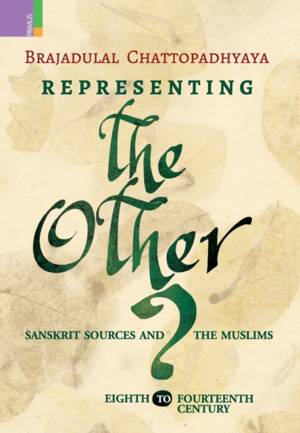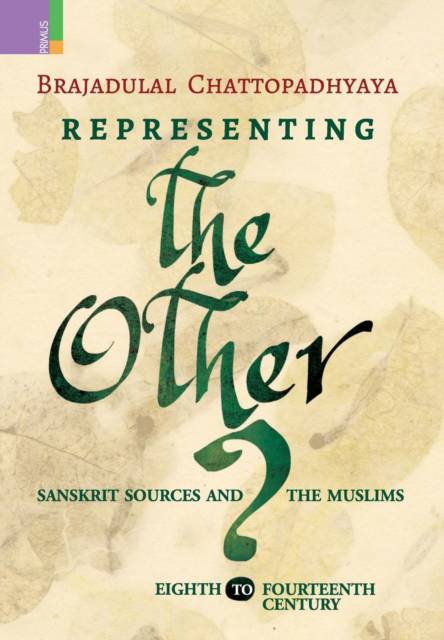
- Retrait gratuit dans votre magasin Club
- 7.000.000 titres dans notre catalogue
- Payer en toute sécurité
- Toujours un magasin près de chez vous
- Retrait gratuit dans votre magasin Club
- 7.000.0000 titres dans notre catalogue
- Payer en toute sécurité
- Toujours un magasin près de chez vous
Representing the Other
Sanskrit Sources and the Muslims, Eighth to Fourteen Century
Brajadulal ChattopadhyayaDescription
The deeply entrenched image of the interaction between Hindus and Muslims in India's past--as indeed in the present-- has generally been that of two aggressively antagonistic religious communities, with the superior political power wielded by one community defining its dominance over the other. This original colonial notion has often been contested by positing the thesis of syncretism at the religious level; by citing evidence of patronage across religious establishments, and of participation of both communities in the country's administration. Neither approach, however, took up the critical task of examining the viability of the premise of homogeneity in the composition of the two communities, or how contemporary perceptions may be used as a touchstone for 'othering' in heterogeneous societies of the past. Chattopadhyaya's Representing the Other?, originally published almost two decades ago, makes an attempt to construct perceptions of new ethnic groups in India in an important phase of its history, from the eighth to the fourteenth century. The evidence though insufficient, reveals not homogenous religious communities, but ethnic groups of diverse origins, located in different socio-political contexts as traders, raiders and plunderers, as well as rulers and administrators. The contexts define the characterization of these different categories by either invoking terminologies from the past for others or by coining ethnic terms. Based mainly on contemporary Sanskrit epigraphic and textual sources, this book is expected to be a major corrective to the way students are generally taught to read the history of our country of this period and of what followed.
Spécifications
Parties prenantes
- Auteur(s) :
- Editeur:
Contenu
- Nombre de pages :
- 108
- Langue:
- Anglais
Caractéristiques
- EAN:
- 9789386552365
- Date de parution :
- 10-08-17
- Format:
- Livre relié
- Format numérique:
- Genaaid
- Dimensions :
- 156 mm x 234 mm
- Poids :
- 331 g

Les avis
Nous publions uniquement les avis qui respectent les conditions requises. Consultez nos conditions pour les avis.






